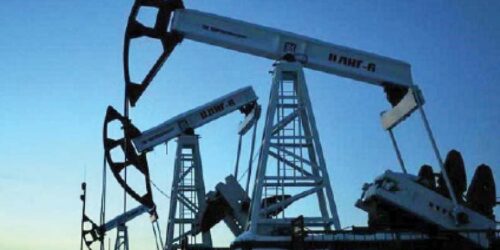Gas and furnace oil (FO) crisis is becoming a norm in Pakistan in winters. To some extent, failure to procure adequate volume of LNG in winter was also overplayed by the media. However, if there is going to be an FO crisis, the government should be held responsible. The fear is that locally produced FO by refineries may not be consumed due to higher imports. If that happens, local refineries will produce lower quantities of petrol and diesel. And that can disturb the value chain of domestic hydrocarbons i.e., production of domestic crude and gas could fall short of demand.
The energy value chain is complex. One variable can have an adverse impact on several others. That is why coordination and planning within the energy ministry is imperative. Since government is the primary decision maker for import of LNG and FO, coordination between various government departments cannot be overemphasized.
Problems for local refineries started growing with the change in power production mix. In the last few years, several RLNG, coal or hydro-based projects have come online. Reliance on FO in IPPs and captive power plants (CPP) is falling. This is good in terms of fuel efficiency and production cost. However, a different problem of consuming locally produced FO has crept up, as exporting FO is a challenge due to plummeting global demand.
In 2022, over 6,000MW new projects (on LNG, coal — both Thar and imported, nuclear and hydro) are coming online. In future, there will be no way to consume domestic FO by the power sector. Even the recent LNG plants will be lower in the merit order.
That is why refinery upgradation is imperative to safeguard future of local refineries. Pakistan’s archaic refineries produce FO along with petrol, diesel, and other fuels by processing crude. If FO is not consumed, it must be stored. Once FO storage capacity is full, refineries must either shut or reduce production. This is what is happening today. Out of five, two refineries are closed, and rest are operating on reduced capacity.
The immediate problem on hand is to consume (or export) both imported and local FO. Since July 2021, the government has imported 858,210 tons of High Sulphur Furnace Oil (HSFO) at an estimated cost of $420 million, and 259,291 tons of Low Sulphur Furnace Oil (LSFO) at an estimated cost of $150-160 million. Total imported cost is around $550-600 million for importing 1.1 million ton (MT) of FO.
Out of 1.1MT imports, the quantity of around 550,000-600,000 tons is yet to be consumed and occupying country’s storage. Local refineries’ average monthly production is around 200,000 tons. Use of FO was low in the last few weeks, and there was no lift-up from local refineries. These started topping up their internal storages and are now tapering off production raising red flags. The good news is that finally, government has started operating FO-based power plants and ministry of energy is confident that the consumption will increase enough to use both imported and local production. However, it seems to be an overly optimistic scenario.
The question is why the government imported higher FO quantities. During the last full year (FY21), total FO imports were 70 percent of what was imported in the first half of this year. Power Division demanded higher quantities and PSO responded to it by importing the same. Power Division feared that LNG prices would be higher and there would be lower import of LNG; thus, RLNG would have had to be diverted from power to other sectors. Moreover, hydro power production was expected to be lower due to lesser water availability. Hence, reliance of power production would be higher on FO. However, due to late winters in Punjab and KP, gas demand is low, and that is why FO consumption in the power sector is lower as well.
The situation today is alarming. Refineries’ production is low. One shipment of imported FO is waiting for berthing and demurrages are being incurred on a daily basis. It is time to act to avert a potential crisis. The government should maximize FO-based plant production. These are low on merit order. But the merit order should not be followed. LNG plants should be shut down, and gas should be diverted to other sectors. Domestic sector is short of gas anyway. Textile industry is throwing tantrums too. There are enough avenues for gas consumption, but not many for FO. That is why FO power plants must run for the next 2-3 months.
At an efficiency of 40 percent, 5,270 tons of FO is required to run 1,000MW a day. With current imported stocks of 600,000 tons and local monthly production of 200,000 tons, the government should run 3,200MW every day for the next two months to end the imported stocks. In order to do so, merit order would be violated. This will also lead to higher Fuel Price Adjustment (FPA).
The other option is to re-export the imported FO at a loss, or to export domestic production at a loss. One refinery (PARCO) recently bid for exports, but the price it received would incur Rs 30,000 per ton loss. This would mean exporting 50,000 tons would have a loss of Rs1.5 billion. No refinery can absorb such losses. They would prefer to shut down in case of no uplift. Thus, running FO-based power plants is the only way out. Otherwise, in case of Attack refinery and PARCO closure, the domestic crude and gas production will stop, leading to a much bigger crisis.
Using FO in power production is an inefficient and costly solution, but there is no other way. The buck stops at Power Division for importing higher quantities. Since that is being done, the focus is now on damage control.
This may be the only immediately available solution to a self-created FO problem. Next year and onwards, even without FO imports, local FO consumption would be an uphill task. As mentioned above, over 6,000MW of power is coming online in 2022, including nuclear, imported, and local coal, hydro, and LNG plants. The demand is not likely to grow much. Even existing LNG plants would be lower in order. Forget about FO based plants.
The question is what the fate of local refineries would be. Without upgradation to process FO into other petrochemicals or exporting FO, domestic refineries may die. Attoc may be an exception due to LSFO production and its usage in power generation. Another survivor could be PARCO due to some upgradation. Rest of the three Karachi-based refineries have a bleak future.
Did the government not know about this? This government is in its fourth year and these new plants are in pipeline prior to they came to power. One could blame the past government for too much commitment in too short time for power projects. But this government had enough time to plan; but it did not. The refinery policy is in the making for two years and still pending.
Nonetheless, refineries must share the blame too. Why didn’t they plan? Why are they waiting for rents from the government to operate? Why do they rely on merely pushing government (some would say blackmailing) for too many incentives? Whatever the case is, time is running out. The refineries cannot upgrade by next winters. There must be a plan to export FO.
There should not be front-loaded incentives in the policy. Refineries are demanding deemed duty before they upgrade. This would mean government (in turn taxpayers) shall finance equity of refineries for upgradation. Why on earth this should happen? If the refineries upgradation projects are not bankable without government support (as they claim), the government should become equity (share) holder in refineries for funding the upgradation, as in that case government shall share risk.
The other element for refinery policy should be to avoid dictation of plant and up-gradation specifications, i.e., it should not get in the business of prescribing any particular process such as use of deep conversion technology? The government should not demand installation of new plants. It should give specifications on fuel, what can be sold in the local market, and let the refineries decide what technology or plant to use. And give them duty incentives once they start production.
All these points are not new. This space and others have been highlighting these for over two years. The problem is of inaction. The problem is of concentration on firefighting. Virtually, every winter, the same film is rerolled and replayed. The capacity to absorb such indecisions is exhausting. It’s time to act. Even if it may be too late already.





